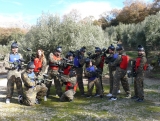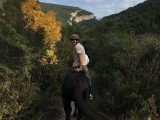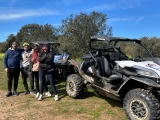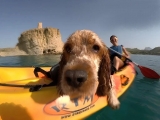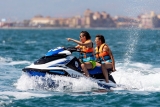The first diving equipment with autonomous compressed air was built by William H. James (England) in 1825. The equipment, a sort of cylindrical container, was worn around the body with straps and pressurised to 30 kg/cm². It featured a helmet with a front window connected to the container, allowing for work at shallow depths.
The first precursor to the modern regulator appeared in 1865 as a result of research by two men: mining engineer Benoit Rouquayrol and naval officer Auguste Denayrouze; they named their invention the "aerophore". This consisted of a 0.8-litre metal tank storing air supplied from the surface via a compressor at 30 kg/cm² pressure. The diver could breathe on demand through a pressure valve connected to a tube and mouthpiece. Most importantly, it could be disconnected from the surface air supply, granting limited autonomy. They also developed, alongside the "aerophore", a facial adaptation of the classic helmet to improve underwater vision.

In August 1926, Paul Gaston Yves Le Prieur, a French naval officer, tested autonomous equipment in a Paris swimming pool consisting of a three-litre tank pressurised to 150 kg/cm². While functional, the air flowed constantly and was regulated by a tap valve. However, an early version of the first full-face mask was successfully used. The helmet window was significantly larger, greatly improving visibility. The drawback was that divers moved vertically by walking along the bottom weighted by heavy boots. This equipment was tested down to 50 metres.
In 1935, the first diving fins were commercialised. Inspired by Leonardo da Vinci's designs, they were created by French naval commander Louis de Corlieu. Made of rubber, they revolutionised underwater movement. The remaining components of light diving gear - the snorkel and mask covering nose and eyes - would be patented and marketed for the first time in 1938.
Finally, in December 1942, French engineer Emile Gagnan and naval lieutenant Jacques Yves Cousteau invented the demand regulator, naming it the "aqualung", which would permanently open the doors to underwater exploration. Cousteau successfully tested it in July 1943. That October, French swimmer Frédéric Dumas used it in a cove on the French Riviera, descending with three five-litre tanks pressurised to 150 kg/cm² to a depth of 64 metres.
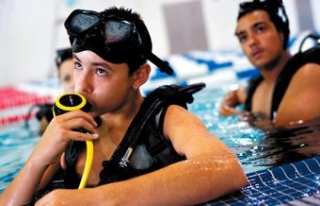
The regulator was a "bitraquea" (named for its two tubes, one on each side of the head, connected to the mouthpiece). Designed with three chambers to reduce pressure: high pressure, ambient pressure and low pressure, it released bubbles through the ambient pressure chamber behind the diver's head, never obstructing vision.
Some notable milestones:
- In 1948, Frédéric Dumas reached 93 metres.
- In 1957, Spaniard Eduardo Admetlla descended to 100 metres using open-circuit equipment in Cartagena (Spain).
- Frenchman Louis Lourmais became the first to dive under perennial ice.
- In 1959, three Italian divers (Olgiani, Noveli and Falco) reached 130 metres using compressed air.
Many have since surpassed these records. The current autonomous diving depth record stands at 285 metres, achieved by American Jim Bowden.





